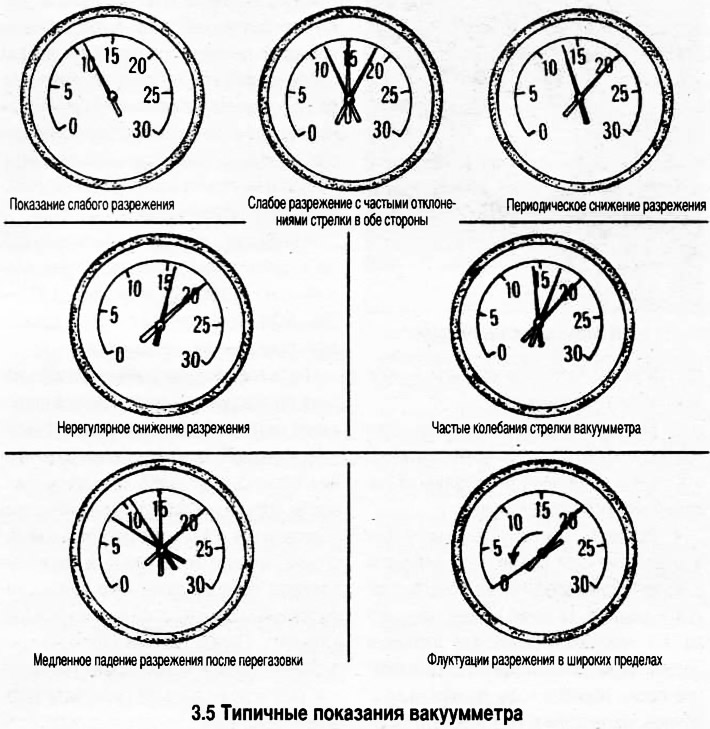2. The initial factors by which the readings of the vacuum gauge are analyzed and the most accurate conclusions about the state of the engine are made are the absolute reading of the device and the nature of the movement of the instrument pointer (dynamics of indications). Vacuum diagnostics should be combined with other methods (for example, with a change in compression in the cylinders).
3. A vacuum gauge is attached to the throttle body to measure pressure directly at the intake manifold. Do not connect a vacuum gauge to accessory hoses. Before checking, make sure that all vacuum hoses are connected in place. Before starting the tests, warm up the engine completely, block the wheels.
Attention! It is not allowed not to disconnect the engine sensors or electro-pneumatic actuators to connect the vacuum gauge, since after their disconnection, the operation of the engine will be disturbed, the readings of the vacuum gauge will be obviously false.
4. Check the reading of the vacuum gauge. On a serviceable engine, the vacuum gauge should show a vacuum of 430-560 mm. rt. Art., and the arrow of the device should be practically motionless.
5. A low but steady level of vacuum usually indicates a leak in the gasket between the intake manifold and the throttle body, the vacuum hose, as well as too late ignition or incorrect valve opening and closing timing due to incorrect installation of the camshaft sprocket (see photo).

6. If the readings of the vacuum gauge are 75-200 mm. rt. Art. below normal and are unstable (arrow twitches), then this indicates a leak in the gasket at the inlet of the suction manifold (see photo).
7. If the arrow regularly deviates by 50-100 mm. rt. Art., the cause is not the tightness of the valves (see photo). Check the compression in the engine cylinders.
8. If the arrow irregularly deviates towards low readings, or trembling shows a low vacuum, then the cause is increased resistance to valve movement, or interruptions in the operation of the cylinders. Check cylinder compression and inspect spark plugs (see photo).
9. If at idle the arrow fluctuates rapidly within 100 mm. rt. Art., and the operation of the engine is accompanied by smoke from the muffler, then the valve guides are worn out. If the arrow fluctuates rapidly with a simultaneous increase in engine speed, then it is necessary to check the tightness of the intake manifold gasket, the elasticity of the valve springs. Such indications can also be due to burnt valves and interruptions in the operation of the cylinders (ignition failures).
10. Weak fluctuations of the arrow within 20-30 mm, RT. Art. indicate unstable ignition operation.
11. At big fluctuations of an arrow check up a compression in cylinders.
12. Bring the engine speed to 2500 rpm and release the pedal. The vacuum gauge reading should drop to almost zero, then rise and exceed the control reading corresponding to stationary idle by about 125 mm. rt. Art., after which the vacuum should be restored to its previous level. A different vacuum behavior indicates wear on the piston rings. If the pressure is restored for a long time, then the cause is a clogged exhaust system (usually a catalytic converter). To test, temporarily disconnect the section of the exhaust system in front of the suspect part and retest.
